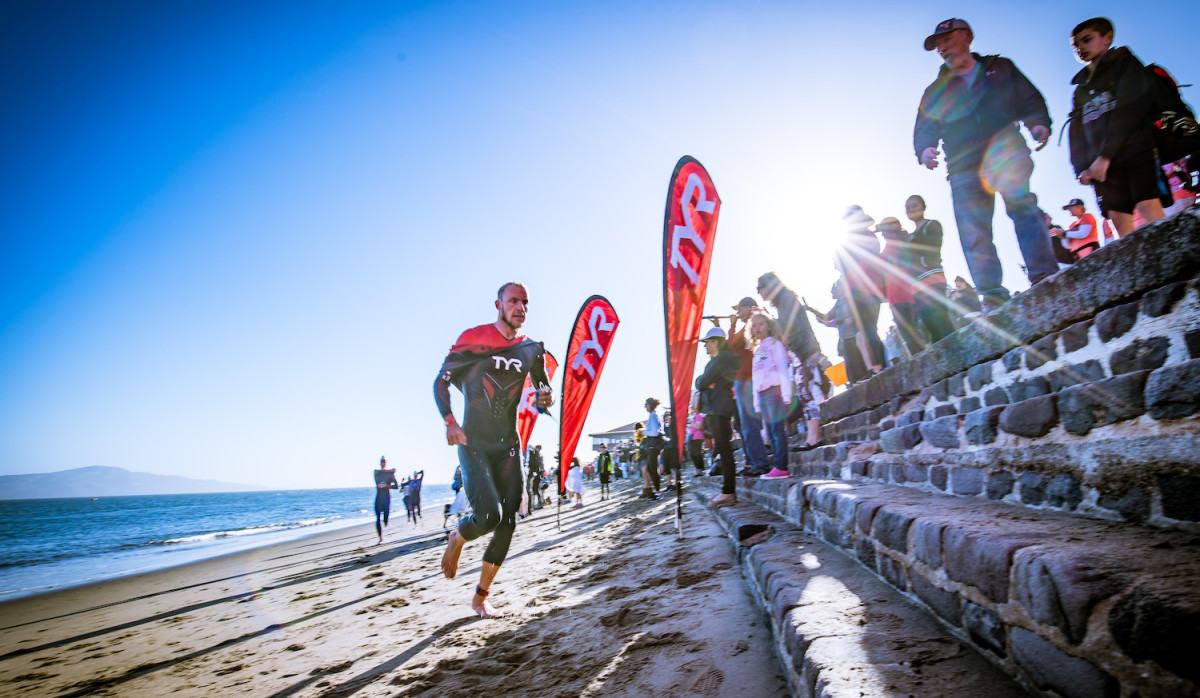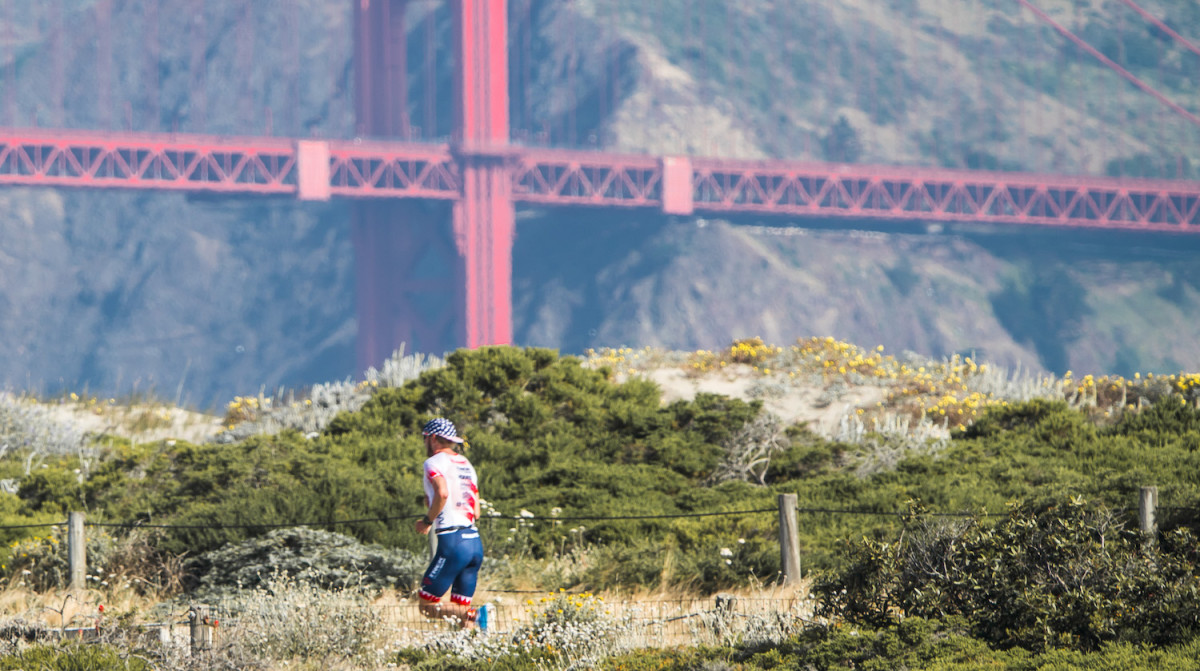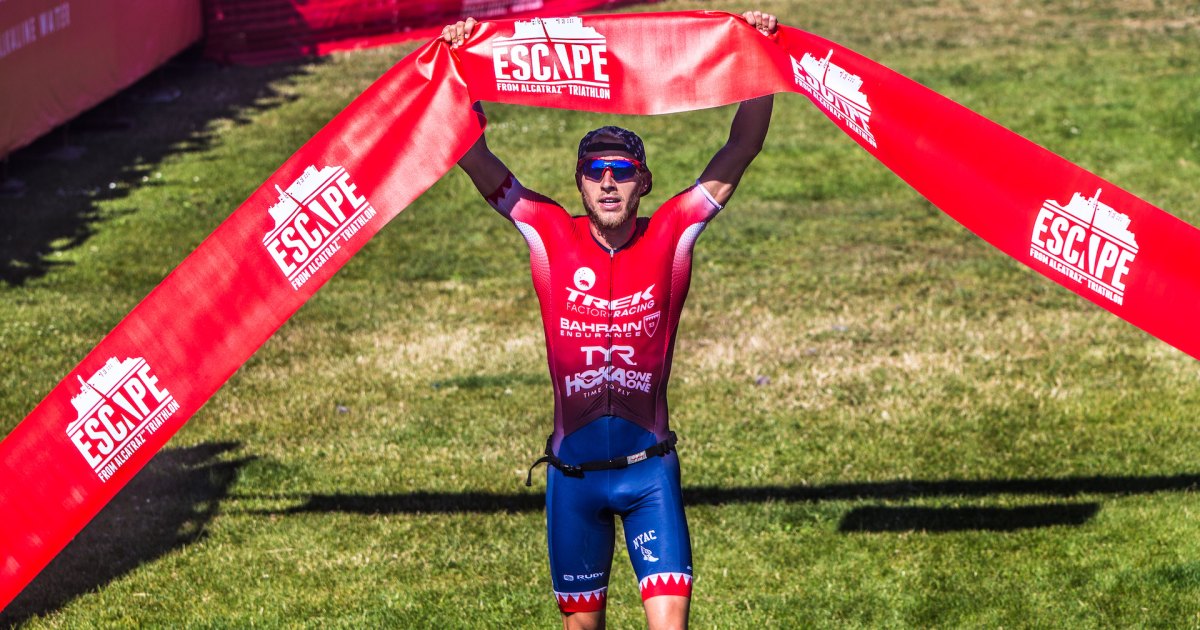No products in the cart.
Fitness Tips
Triathlete Ben Kanute on Chasing History at Escape From Alcatraz
Winning any professional triathlon three times in a row is impressive, but Escape From Alcatraz isn’t just any triathlon. Participants take a chilly plunge into San Francisco Bay’s choppy water for a 1.5-mile swim, then haul 18 miles up twisting hills by bike, and finish with an eight-mile run. The pièce de résistance: a brutal set of cliff stairs called the Sand Ladder. Two thousand amateur and professional athletes from over 50 countries will test their limits on Aug. 15—when the venerated race celebrates its 40th anniversary—but the man to watch is Ben Kanute.
The 28-year-old American athlete will attempt to swim-bike-run down history as the first man to win Escape from Alcatraz Triathlon for four consecutive years. After winning this race from 2017 to 2019, Kanute has been waiting two years for his chance at the record after 2020’s race was canceled due to COVID-19. We caught up with the 2016 Olympian to learn more about this legendary race, his dedicated training schedule, and the mentality it takes to win a triathlon.
Men’s Journal: How do you prepare yourself to stay in the moment during a race that’s so long and grueling?
Ben Kanute: The mental side of the sport is something that gets taken for granted. I go into each workout with purpose to stay focused and try to accomplish goals––whether it’s within the rep, set, or the entire workout. While I’m training, I go through my checklist and make sure my form is good, I’m hitting my pace, finding the rhythm, and trying to find that flow state where everything is working. Once you get to the race, you can hit your cues, go through your checklist, and get the most out of yourself.

What kind of cross training do you do throughout the year?
During the season I try not to branch out too far. My coach lives in San Diego, so I go out there quite a bit. I do enjoy the ocean and love skiing, but a lot of these sports get put on the back burner while you’re training as a professional athlete. It’s risk management. Those sports work completely different muscles, so the injury risk goes up. I work with strength coach Matt Pendola, who’s very good at specific types of cross training and strength training that reinforce the swim, bike, and run. A lot of it’s mobility-based plyometrics and strength training cycles to go along with my normal training. It’s been a nice complement. It’s made me less prone to injury and improved my form in all three sports.
Despite being a shorter distance than other triathlons, Escape From Alcatraz features an extreme swim leg. How do you overcome San Francisco Bay’s notoriously strong current and frigid water?
I love the Alcatraz swim. I think it’s a great challenge. It’s as much a physical challenge as it is a mental and tactical challenge with the way the wind, waves, and currents are. It definitely changes your stroke. You can’t just put your head down and go. Escape from Alcatraz is about reading the water and figuring out where to swim. Of course it’s difficult to do that—you have to adjust as you’re in the water, trying to deal with the current, which is pushing you out of the Bay. While the current helps you over, if you don’t get close enough or cross that “river,” it could end up pushing you past the swim exit. I like to rely a lot on the local knowledge and just ask questions about what the conditions are like that day.

What’s the transition like to the bike leg? What are the biggest challenges?
Even coming out of the water, there’s another challenge to run about a thousand meters to transition. Your feet are numb and you’re trying to get to your bike. But you’ve got to shake the cold to push. The first couple miles of riding to the first hill is pretty flat, then from that point, there’s really no flat section. It’s all pretty steep and, at the far end of the course, there’s one long, grinding climb. In total, I think there are about seven major climbs and the rest is downhill, which can be technical.
Overall, when we’re talking about the Alcatraz course––whether it’s swim, bike or run––there’s no settling in. It’s a lot of high-end efforts for short periods of time. You get a little bit of recovery on the downhills or sections leading to the next challenging part, then you’re pretty much hitting it again. But over the past few years of racing, I’ve found my rhythm.
It ends up being a relatively long race, even though some of the distances are different. It’s an all-out effort, but you’ve got to keep yourself in check because you can put yourself over that red line if you’re not careful.

What’s the key to keeping your competitors behind you in the final stretch—and that notorious Sand Ladder stair climb?
There are a couple miles of flat on the front end and back end, but the rest is either uphill, downhill, or in the sand. I think this is the most rhythm-breaking part of the entire course, because you’re running straight up stairs. The Sand Ladder (400 steps up a cliff) coming off the beach is always tough. You really need to gauge your effort and keep yourself in check for that first half of the run, then leave a little something for the Sand Ladder, and the last sprint home.
Those last couple miles can change a lot depending on how fatigued you are—especially with the guys I’m racing. It’s all about leg turnover. You just need to trust that you’ll get your legs back, you’ll get up and over the hill, then use those downhills as free speed and time to recuperate.
You’ve said you ‘Hate losing more than you like winning.’ When you get to the end of a race, how much do you rely on that mindset to cross the finish line first?
It’s all about mind games––using the feeling of not winning to drive you. But besides outcome goals, such as winning, I always try to have process goals. If I execute my race as well as possible, I can still walk away happy even if I get second or third. Oftentimes outcomes are the only thing looked at throughout the season, but it’s also important to have process goals and make sure you’re executing things correctly. I feel like when I execute all of my processes, I’m hard to beat.
What about Escape from Alcatraz suits your race style?
Escape from Alcatraz is one of the classic triathlons. It’s been around for 40 years, so it was there essentially from the start of the sport. It’s an odd distance, and goes back to the roots where they didn’t care what was in the way. It’s almost like they designed the course to be as hard as possible, and I love that. Racing through the city is scenic, and it’s one of the most unique starts: jumping off a boat in the middle of the San Francisco Bay. I think if you go back and look at a lot of the winners of Escape from Alcatraz, you’ll see people who’ve been very successful in the sport. My goal is to win the race, but I also want to go out there and just feel strong and have fun. If somebody else is going to beat me, I want to make them bury themselves to do it.
For access to exclusive gear videos, celebrity interviews, and more, subscribe on YouTube!
Source link

